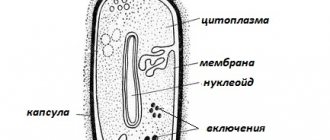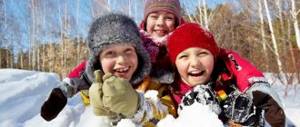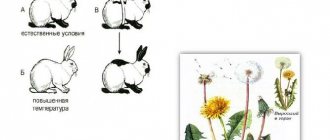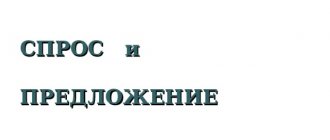Test with answers: “Fundamentals of medical knowledge”
1. One of the main signs of external bleeding: a) severe pain in the damaged part of the body + b) dark red blood c) rapid and pulsating bleeding
2. One of the main signs of external bleeding: a) dark red blood b) bright red blood + c) slow and stringy bleeding
3. One of the main signs of superficial venous bleeding: a) weakness b) blood gushes from the wound c) blood flows calmly from the wound +
4. One of the main signs of superficial venous bleeding: a) dark red blood + b) blood gushing from the wound c) bright red blood
5. How to apply a tourniquet in case of arterial bleeding: a) press the artery above the bleeding with your finger, apply clean soft cloth around the limb 13-15 cm above the wound b) apply clean cloth around the limb 3-5 cm below the wound c) press the artery with your finger above the bleeding, 3-5 cm above the wound, apply a clean soft cloth around the limb +
6. How to apply a tourniquet in case of arterial bleeding: a) press the artery above the bleeding with your finger, place a clean soft cloth around the limb 13-15 cm above the wound b) attach the tourniquet tightly to the limb and make the required number of turns, and also attach a note to the tourniquet indicating the date and exact time of application + c) press the artery below the bleeding with your finger
7. One of the signs of internal bleeding: a) increased blood pressure b) pink discoloration of the skin in the area of injury c) bluish discoloration of the skin in the area of injury +
8. One of the signs of internal bleeding: a) rapid, weak pulse and rapid breathing + b) a feeling of insatiable hunger c) yellowing of the skin in the area of injury
9. One of the signs of internal bleeding: a) a feeling of insatiable hunger b) increased blood pressure c) cough with bloody discharge +
10. What is first aid for minor open wounds: a) wash the wound with soda solution and treat it with alcohol b) wash the wound with hydrogen peroxide (potassium permanganate solution) and treat it with iodine + c) lubricate the wound with Vaseline or cream
11. What is first aid for minor open wounds: a) seal the wound with a bactericidal plaster or apply a sterile bandage + b) lubricate the wound with Vaseline or cream c) wash the wound with a soda solution and treat it with alcohol
12. What is first aid for sprains: a) apply a splint to the damaged area b) apply cold to the damaged area + c) apply heat to the damaged area
13. What is first aid for sprains: a) apply a tight bandage to the damaged area and provide rest + b) apply heat to the damaged area c) apply plaster to the damaged area
14. How is first aid provided for bruises: a) applying heat to the bruised site b) applying plaster to the damaged area c) applying cold to the bruised site +
15. How is first aid provided for bruises: a) applying a tight bandage to the bruised site and providing rest to the damaged area + b) applying heat to the bruised site c) applying a splint to the damaged area
16. How to provide first aid for sprains: a) apply a gauze bandage to the victim and do not give him anything to drink b) provide rest to the injured limb + c) apply a sterile bandage and give the victim plenty of fluids
17. How to provide first aid for sprains: a) apply a sterile bandage and give the victim plenty of fluids b) apply a gauze bandage to the victim and do not let him drink c) apply a tight bandage and give the victim painkillers +
18. What should be the first aid for open fractures: a) set the exposed bones b) stop the bleeding and treat the edges of the wound with an antiseptic + c) put a compress on the wound in the area of the fracture and do not give the victim painkillers
19. What should be the first aid for open fractures: a) apply a compress to the wound in the area of the fracture and do not give the victim painkillers b) set the protruding bones c) apply a sterile bandage to the wound in the area of the fracture and give the victim painkillers +
20. How to provide first aid for closed fractures: a) wrap the injury site warmly and give the victim an anesthetic b) immobilize the fracture site + c) eliminate the curvature of the limb
21. How to provide first aid for closed fractures: a) apply cold to the injury site and give the victim an anesthetic + b) eliminate the curvature of the limb c) wrap the injury site warmer and give the victim an anesthetic
22. What should be the first medical aid if a concussion is suspected: a) place a warm heating pad on the victim’s head b) provide the victim with absolute rest + c) wrap a sterile bandage around the head
23. What should be the first medical aid if a concussion is suspected: a) wrap the head with a sterile bandage b) apply a warm heating pad to the victim’s head c) put cold on the victim’s head +
24. How to provide emergency resuscitation to the victim: a) do not begin chest compressions and do not perform artificial ventilation b) put the victim on his back on a hard, flat surface + c) put the victim on his back on a soft, flat surface
25. How to provide emergency resuscitation assistance to the victim: a) place the victim on the right side on a soft, flat surface b) do not perform chest compressions and do not perform artificial ventilation of the lungs c) perform a precordial blow to the sternum +
26. How to provide emergency resuscitation assistance to the victim: a) put the victim on his back on a soft, flat surface b) begin chest compressions and artificial ventilation of the lungs, call an ambulance + c) do not start chest compressions and do not perform artificial ventilation
27. What type of immunity is formed as a result of an illness: a) natural + b) artificial c) hereditary
28. The system of measures aimed at preventing the occurrence of the disease is: a) boxing b) punishment cell c) quarantine +
29. Diphtheria is dangerous as a complication on: a) heart + b) liver c) kidneys
30. What is repeated vaccination called: a) prevaccination b) revaccination + c) devaccination
Test with answers on the topic: Medical training
Test “Medical training”
Author: Yulia Aleksandrovna Kharchenko, methodologist of the Municipal Educational Institution “Cheremkhovo House of Childhood and Youth” Description of the material: the proposed material is intended for class teachers, deputy directors for educational work, deputies for life safety, teacher-organizers, parents, secondary students and senior management. This material can be used in preparation for participation in the Rally of Young Firefighters, or during career guidance weeks in an educational organization. Goals: promotion of fire-technical knowledge among students of general education institutions; formation of public consciousness and civic position of the younger generation in the field of fire safety and attracting children's attention to issues of personal and fire safety. BLOCK 1: 1. What bandage should be applied if a finger is injured? A. Cross-shaped B. Spiral C. Sling-shaped 2. Transport tire, what should it be? A. With the ability to fix only the fracture site B. With the ability to fix the fracture site and immobilize two adjacent joints. B. With the ability to fix the fracture site and immobilize the nearest joint. 3. In what position is it necessary to evacuate a victim with dislocations of bones in the joints of the upper extremities? A. In the “lying” position B. In the “sitting” position C. Free position, with general weakness - “sitting” or “lying down”. 4. Basic rules for providing first aid for traumatic shock: A. Carrying out measures to stop the action of traumatic factors. Remove clothing or relieve pressure. Give ammonia a whiff. Apply a cold compress to your forehead. Provide fresh air flow. Organize a call to the scene of the emergency medical service. B. Place the victim on his back. Give ammonia a whiff. Apply warm lotions to the forehead and back of the head. B. Carrying out measures to stop the effects of traumatic factors. Restoring impaired breathing and cardiac activity, temporarily stopping bleeding, fighting pain, covering wounds with sterile (clean) bandages, giving the victim the most comfortable position, ensuring a flow of fresh air, organizing a call to the scene of an emergency medical service. 5. Name painkillers: A. Diphenhydramine, valerian. B. Panadol, analgin. B. Penicillin, phthalazole 6. During closed cardiac massage, pressure is applied to the chest..... A. To the left of the sternum B. To the right of the sternum C. On the lower part of the sternum 7. When transporting a victim with a spinal fracture, the victim should be in position: A The victim should be laid on a hard board, in the “stomach” position (with a bolster under the upper torso) or on the back (with a bolster in the lumbar region) B. , in the “stomach” position with raised head end. B. The victim should be laid on a hard board, in the “stomach” position with the head end down. 8. The victim is unconscious. There is no breathing or pulse. Your actions? A. Call “03” and wait for the ambulance to arrive B. Call “03”, perform artificial respiration and chest compressions. B. Place the victim in a position that is comfortable for him, bandage him, give him an anesthetic, and wait for an ambulance. 9. If there is a loss of consciousness and a decrease in blood pressure without bleeding, it is necessary to: A. Place the victim so that his head and legs are at the same level, give an anesthetic. B. Place the victim so that his head and legs are at the same level, give a sedative. B. Place the victim so that his legs are higher than his head. 10. First aid for an open fracture: A. Correctly immobilize the limb, apply a sterile bandage to the wound, give an anesthetic and organize transportation of the victim to a medical facility. B. Immerse the exposed bone fragments into the wound, apply a sterile bandage and ice pack to the wound, give painkillers and keep the limb at rest. B. Combine the ends of the broken bones, apply a sterile bandage to the wound, and immobilize the limb. BLOCK 2: 1. How to properly put a shirt on a victim if his arm is wounded? A. Clothes are put on both hands at the same time. B. Clothes are put on the sore arm first, then on the healthy arm. B. Clothes are put on the healthy arm first, then on the sore arm. 2. Basic rules for applying a transport splint for a fracture of the leg bones: A. Apply 2 splints on the inner and outer sides of the leg from the foot to the knee joint and bandage them. B. Apply 2 splints on the inside and outside of the leg from the foot to the middle of the thigh to immobilize the fracture site, knee and ankle joints. 3. What is the purpose of iodine in a car’s first aid kit? A. For treating the skin around the wound. B. To treat the entire surface of the wound if the wound is heavily contaminated. B. For treating burns caused by alkali. 4. What material can be used as a tire? A. A piece of board B. Bandage, cotton wool. B. Fabric, soft cardboard. 5. How to properly remove a victim’s shirt if his left arm is wounded? A. Remove clothes from your left hand, then from your right. B. Remove clothes from your right hand, then from your left. 6. How to provide first aid for a broken pelvic bone? A. Place the victim in a semi-sitting position and apply a tight bandage. B. Lay the victim on a flat, hard surface, bend and spread the knee joints and place a cushion of clothing or other substitute material under them. B. Lay the victim on his back on a hard surface, apply a heating pad or a bubble with ice or cold water to the injured areas. 7. How to transport a victim with a penetrating chest wound? A. Lying on your stomach B. Lying on your back C. Lying on your back with your upper body elevated. 8. For what maximum period can a hemostatic tourniquet be applied? A. No more than half an hour B. No more than 2 C. No more than an hour 9. What needs to be done to clear the victim’s airways? A. Raise your head higher. B. Place something under your shoulders and tilt your head back as much as possible, clean your mouth. B. Open the victim’s mouth. 10. Basic rules for applying a transport splint for a fracture of the femur in the lower third. A. Apply one splint from the foot to the middle of the thigh. B. Apply two splints, one from the foot to the armpit, the other from the foot to the groin. B. Apply two splints, from the foot to the end of the thigh. 3 BLOCK 1. First aid for frostbite: A. Rub the affected area with hard material or snow. B. Create conditions for general warming, apply a cotton-gauze bandage to the frostbitten area, and give a warm drink. B. Give a light massage, rub the affected area with cologne. 2. What is capillary bleeding characterized by? A. Blood flows from the wound in a pulsating stream and is bright scarlet in color. B. Blood flows out from the wound continuously, in a continuous stream of dark red color. B. Blood flows out of the wound in rare drops or as a slowly spreading spot. 3. How is venous bleeding characterized? A. Blood flows from the wound in a pulsating stream and is bright scarlet in color. B. Blood flows out from the wound continuously, in a continuous stream of dark red color. B. Blood flows out of the wound in rare drops or as a slowly spreading spot. 4. How is arterial bleeding characterized? A. Blood flows from the wound in a pulsating stream and is bright scarlet in color. B. Blood flows out from the wound continuously, in a continuous stream of dark red color. B. Blood flows out of the wound in rare drops or as a slowly spreading spot. 5. What signs indicate the presence of internal bleeding? A. Skin color, blood pressure level, consciousness. B. Pulse, high temperature, convulsions. B. Sharp pain, swelling, loss of consciousness. 4 BLOCK 1. What bandage is applied when the forehead is damaged? A. Spiral B. Cap or sling-shaped C. A bandage is applied to the forehead and fixed with a plaster 2. The correct way to stop capillary bleeding? A. Applying a tourniquet to the limb B. Applying a pressure bandage to the wound C. Sharply bending the limb at the joint 3. The correct way to stop arterial bleeding? A. Applying a tourniquet above the wound or bending the limb at the joint B. Applying a pressure bandage to the wound 4. What should be done in case of loss of consciousness? A. Artificial respiration B. Cardiac massage C. Free the respiratory tract from foreign bodies and vomit 5. For what purpose is potassium permanganate (potassium permanganate) found in the first aid kit in the car used? A. Externally in aqueous solutions for rinsing the mouth and throat B. Externally in aqueous solutions for washing wounds C. In aqueous solutions for washing the stomach D. For all purposes specified in paragraphs 1 and 2 E. For all specified in paragraph items 1-3 objectives 6. What are the signs of a closed fracture of the bones of the extremities? A. Severe pain, swelling of soft tissues and deformation of the limb B. The limb is distorted, the skin is damaged, bone fragments are visible C. Bruises, abrasions on the skin 7. What are the rules for providing first aid? A. As quickly as possible, transfer the victim to the shade, lay him on his back (the head should be lower than the body), rub the heart area B. Place the victim in the shade, lay him on his back, apply cold compresses, place a cushion under the head, ensure sufficient access to fresh air air B. Sit the victim in the shade, give him a cold drink, apply a cold compress to the chest. 8. Which bleeding is considered the most dangerous? A. Capillary B. Venous C. Arterial 9. What is a 10% aqueous solution of ammonia (ammonia) used in a car first aid kit? A. For treating wounds B. For applying a warm compress C. For inhalation during fainting and intoxication 10. How to provide assistance to a victim who has been burned in certain areas of the body with alkaline solutions? A. Rinse the affected area with water, lubricate with a rich cream and apply a bandage made of clean cloth B. Treat the affected area with a 1-2% solution of boric, citric or acetic acid, apply an aseptic bandage C. Wash the damaged area with soap or 2% solution of table soda , apply an aseptic bandage 11. How to provide first aid to a victim who has burned certain parts of the body with acid? A. Rinse the affected area with water, lubricate with a rich cream and apply a bandage made of clean cloth B. Treat the affected area with a 1-2% solution of boric, citric or acetic acid, apply an aseptic bandage C. Wash the damaged area with soap or 2% solution of table soda , apply an aseptic bandage 12. In what cases is enterodesis or activated charcoal found in the first aid kit used? A. For abdominal pain B. For high temperature C. For poisoning 13. What is the sodium sulfacyl solution in the first aid kit used for? A. To wash wounds B. Moisten a cloth and apply it to sterilize the burned surface. B. In case of eye injury or foreign bodies, rinse the eyes and instill 3-5 drops of sodium sulfacyl solution 14. Signs of carbon monoxide poisoning? A. Weakness, nausea, vomiting, dizziness, redness of the skin B. Weakness, dizziness, paleness of the skin C. Headache, fever, abdominal pain 15. How to help with a burn from boiling water? A. Lubricate the burned area with ointment or lotion, apply a sterile bandage B. Rinse the burned area with cold water for about 10 minutes, apply a sterile bandage, give painkillers C. Sprinkle the burned surface with baking soda, apply a sterile bandage KEY to the “Medical Preparation” test 1 BLOCK: 1b;2b;3c;4c;5b;6c;7a;8b;9c;10a. 2 BLOCK: 1b;2b;3a;4a;5b;6b;7c;8b;9b;10b. 3 BLOCK: 1b;2c;3b;4a;5a 4 BLOCK: 1b;2b;3a;4c;5d;6a;7b;8c;9c;10b;11c;12c;13c;14a;15b
We recommend watching:
Diagnosis of the class team Summary of the lesson "Life Safety" for schoolchildren with a complex defect structure Test with answers on the topic "Technique and equipment" Test with answers for schoolchildren "Fire safety rules"
Similar articles:
Summary of an integrated lesson on life safety and chemistry in 11th grade
Summary of an integrated biology and life safety lesson in 8th grade
Systematic approach to life safety training
Project technology in life safety lessons
Active forms of cognitive activity in life safety lessons




